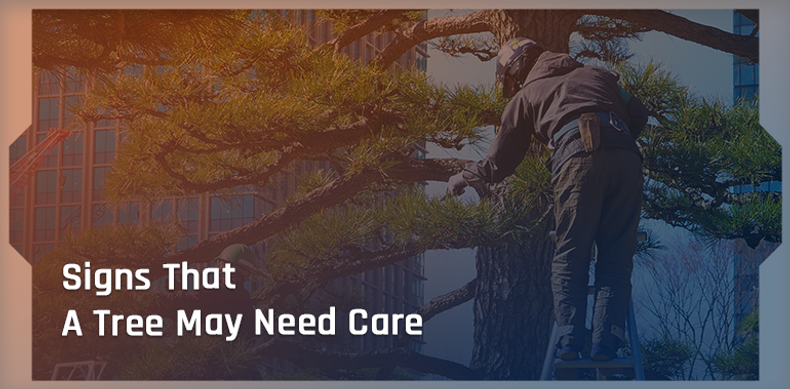Chances are if you stumbled across this article you have some regard for trees. Trees simply add to our lives. They provide shade, help improve our moods, increase property values, improve air quality, and look beautiful.
Sometimes trees need our help. There are times when you will want to hire an arborist, tree specialist, or tree surgeon. In this guide, we are going to talk about some signs that a tree may need care, what can be done to help trees and things that you should avoid doing.
If you would like to learn more about tree care and signs that a tree may need to be inspected by a professional, stick around and we will give you some tips.
Things To Look Out For
Trees are just like most other living things- they can develop diseases, get plagued by pests, or sustain injuries. Trees planted outside of their native habitats are especially susceptible to disease and pests. Also, trees that are overtreated or just treated incorrectly end up being harmed rather than thriving.
When you inspect a tree, it’s important to look for general anomalies in how it is growing. Are there certain areas where leaves are falling off more than the rest of the tree? Are there visible cracks in the bark or even the general structure of the tree?
Here’s a list of some common signs that a tree could use treatment or at least a diagnosis from a tree specialist.
Signs Of A Tree Needing Care:
- Blight
- Decay
- Fungus
- Rotting
- Discoloration
- Heavy Limbs
- Unusual Bugs
- Irregular Holes
- Dropping Limbs
- Cracks In The Bark
- Leaves Falling Of Irregularly
- Stress To The Structure Of The Tree
Roots Of Tree Problems:
There are a lot of reasons that trees can develop these types of problems. Aside from the common issues surrounding non-native trees, trees can be sensitive to any number of different factors.
A general rule of thumb is that if the environment surrounding a tree is changed in some way, it will likely have to adapt in some way. Trees can naturally alter themselves to survive some change but there are some things that can damage a tree to the point where we will need to intervene if we want it to survive.
If you can learn just a little bit about trees, thankfully many of these issues can easily be avoided with some thoughtfulness.
Common Causes Of Tree Damage:
- Pests
- Fungus
- Drought
- Poor Irrigation
- Bacteria, Such As Slime Flux
- Soil Being Packed Too Tightly
- Misuse Of Chemicals In Fertilizer & Pesticides
What To Do:
If you catch a tree when it needs care early, a good arborist can often diagnose the problem. With a little luck, they can offer simple solutions or improve a tree’s health significantly with some light treatment.
Light pruning focused on the removal of damaged and diseased limbs is often all that a tree needs. A well-trained arborist who respects the core values of arboriculture will be able to do this pretty easily without causing further harm to the tree.
Adding mulch to the soil can often improve plant health significant
Natural soil treatments can add nutrients and minerals, helpful bacteria, and even attract helpful insects.
Things To Avoid Doing:
One of the most common mistakes that people make when hiring arborists is asking them to over-prune trees. Let your tree worker know that you want them to avoid using “lion-tailing” techniques or remove the top of a tree unnecessarily. These techniques may make a tree look nice and clean in the short-term but when the branches sprout again, they will grow unevenly or branches will overgrow, creating excessive weight that will damage the structure of the tree.
When you are hiring a tree service specialist, you will want to make it clear that you want to sustain the natural structure of the tree. Make it clear that you are more interested in the long-term health of your trees than quick fixes.
Things To Avoid Doing To Trees:
- Overpacking Soil
- Excessive Pruning
- Obstructing Water Access
- Using Unnatural Fertilizers
- Using Unnatural Pesticides
- Modifications That Go Against A Tree’s Natural Structure
Chopping It Up
It is important if you love the trees on your property to look out for their health. Social pressure from neighbors and professionals who don’t have a tree’s best interest in mind can lead to damaging trees beyond repair. Doing a little bit of research on your own part about tree health and choosing your tree specialist wisely will help you to make sure that your trees will live long, healthy lives.





